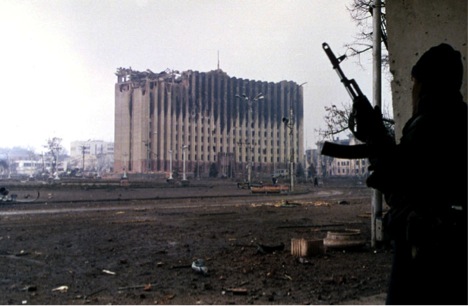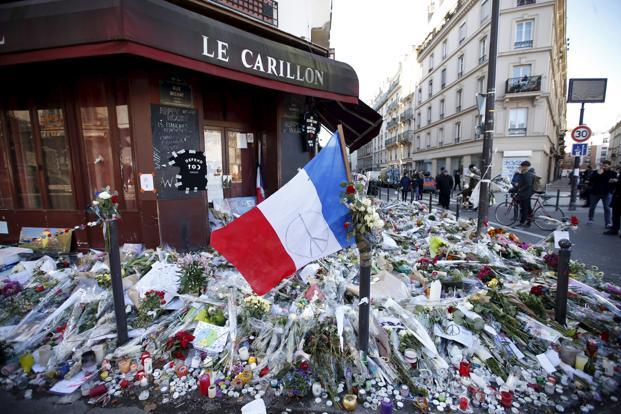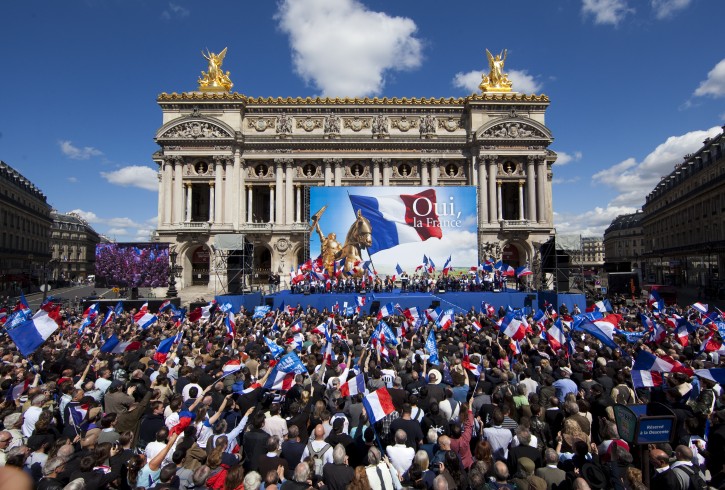By: Michael Ingram

April 15th, 2013 brought a new place into the spotlight of the American public conscious – Chechnya. However, this autonomous republic of the Russian Federation has spent the last 20 plus years in the gun sights of the Russian military. While the actions of two young Chechen men reminded Americans of the horrors that terrorist acts on their soil can precipitate, it also exposed the reality that the radical Islamist threat rears its ugly heads in lands outside of the Middle East and Northern Africa. While the bombers may not have been a working group of a larger anti-American cell, the story of the discord in Chechnya is telling of conditions that lead to the proliferation of terror.
The dissolution of the Soviet Union was an opportunity for Chechnya to escape from under the boot of the totalitarian regime that had ruled them since 1785. While Chechens finally began to see the light at the end of the tunnel, the new Russian government had different plans. When the USSR collapsed, many former Soviet republics declared independence, seceding in favor of home-rule. Chechnya followed suit, establishing the secessionist government of the Chechen Republic of Ichkeria in 1991. This new, unrecognized state was secessionist because, unlike newly independent nations such as the Ukraine, Chechnya had for centuries been a part of Russia. Yet, its Islamic population had never fully adopted the culture of its occupiers. The small, landlocked nation in the Caucasus Mountains had developed its own unique culture in the isolation of the surrounding peaks, but that culture had always been an object of disdain in Moscow. As there are several other Russian territories that share Chechnya’s lack of complicity with the greater Russian mindset, secession was something that the central government could not tolerate for fear of setting a dangerous precedent. Thus, the Chechens would pay with blood for their transgressions.
Mother Russia knows best, and soon the guns of their armies were squarely fixed on the tiny nation of only 1 million. The First Chechen War raged for nearly two years from 1994 to 1996. Russian forces descended upon the mountainous region like a horde of locusts. Despite the Russians’ superior firepower, the precarious geography and the Chechens’ guerrilla tactics sapped Russian morale and forced a ceasefire. The ceasefire was too little, too late to assuage the destruction that had stricken Chechnya, and any attempts at reconstruction would soon have to be put on hold.
Chechnya continued its de facto independence until 1999 when Russia once again went on the war path. The interwar period between the First and Second Chechen Wars saw Chechnya become a black hole of governance. The Russians became increasingly wary of the unrest which was spawning religious extremism within their borders. The Second Chechen War, which saw military operations for nearly a year from 1999 to 2000 and an insurgency that continued until 2009, would be Russia’s final statement on the matter. It resulted in the re-imposition of federal control and continued the bloodshed and destruction that had gripped Chechnya since the establishment of the Russian Federation.
Perhaps this effect was best observed within the capital of Chechnya: Grozny. The capital city had seen some of the fiercest fighting of the wars. The two Russian sieges of the city brought levels of bombardment not seen since World War II. Repeated carpet bombings and missile strikes were as likely, if not more likely, to rain upon innocent civilians. By the end of the Second Chechen War, nearly every building in the city had been damaged. The United Nations even went as far to call Grozny “the most destroyed city on Earth.” Grozny was explicative of what had become of life in Chechnya. War was the new normal, and violence was interwoven into daily life. The vengeance of Russia would inevitably bring Chechnya under the auspices of the autocratic federal government, but it would do little to diminish the despair and anger that Chechens had lived with for nearly two decades.
One is tempted when contemplating the emergence of terrorism in Chechnya to put war and Islam together and call it a day. Such a calculus has undoubtedly gone through the minds of many Americans since that fateful day during the Boston Marathon. But to do so would be to oversimplify the true nature of the beast. Terrorism is not something destined to occur. The environment itself must exist in a certain state for the conditions to be right. Chechnya‘s rise in terror was not spontaneous but rather the result of a combination of failed policies, the costs of war, and a lack of stable institutions.
Russia has been the unfortunate recipient of the worst that Chechen terrorist elements have to offer. From the 2002 Moscow Theatre hostage crisis to the 2004 Beslan School Massacre, Chechen terror groups have left their mark on the collective Russian psyche along with hundreds of body bags (including 186 children in the 2004 attack). These attacks have been in response to Russian occupation, but the roots of the terrorist acts go back much further.
With the first attempt at Chechen independence following the fall of the USSR, Chechnya was neither a land of hardened Islamists, Russian-backed puppet governments, nor warlords. However, immediately after the death of the Soviet state, Russia began a practice of ignoring more moderate and secular Chechen leaders. With the onset of war, a power vacuum commenced. With no government able to tend to the needs of the Chechen people, another institution filled the void. Islam, being the most stable institution left in the country, was a locus for the disenfranchised and scarred youth of Chechnya. War had destroyed infrastructure and all but evaporated the economy, leaving Chechnya mired in poverty. Coupled with the fact that Chechen leadership was increasingly growing more extremist, in their tactics and ideology (aided by the importation of Salafism by the influx of foreign fighters), all the pieces were in place for radical Islam to take the country by storm. War and desperation had taken all options off the table for Chechens, save for one. Perhaps the Economist explains it best: if nothing else, the sense of order and self-organization offered by Salafism offers an alternative to being an idle spectator of your own misfortune.
The conditions that lead to the growth of terrorism in Chechnya are the result of many different actors. Russia had made it part of its military strategy not to engage with the moderate and secular Chechen separatists that had tried to negotiate with the former superpower. War had uprooted Chechen society and left only poverty and ashes in its wake. Islam supplanted the Chechen government as the primary institution of the Chechen people. Throw in a dash of Islamic extremism, and the environment is ripe for the birth of terrorism. The conditions within Chechnya have much in common with the conditions that preceded terrorism in Afghanistan, Iraq, Somalia, Mali, and countless other areas. What appears is a pattern. The pattern shows that the ire terrorist groups have for the West is not the cause of terrorism, but rather a symptom of a larger disease that has overtaken their homelands. Hopelessness breeds inhumanity, and these lands have spent the last several decades knowing nothing but both.
There are lessons to be learned from Chechnya. First, a war against any state leaves an impression on the losing society that lingers much longer after the last shot is fired. Boris Yeltsin failed to acknowledge this when he sent Russian troops to Chechnya the first time. With his poll numbers in mind, he thought the rebellious Chechens would be subdued after a short, decisive victory. What resulted was the beginning of a much larger problem. America has made this same mistake before, but states can avoid making such a miscalculation in the future. Second, Islam is not synonymous with terror. The radical offshoots that infected Chechnya after the commencement of fighting are. War is the catalyst that pushes the moderate Muslims out of power and replaces them with men who have combined the fundamentalist tenants of Islam with their own penchants for violence. Third, poverty is the overwhelming cause of the radicalization of Islam. A lack of economic opportunity leaves more influence to unlawful groups. Terrorism spawns in areas of extreme poverty, much as gang violence spreads throughout the bleak streets of the inner city. These people were not born to be terrorists, but the environment they were born into gave them few other options.
Terrorists are a fraction of the Chechen diaspora, and most Chechens are better described as refugees. Yet, Chechnya’s history has put it on a path where such inhumanity is a distinct reality. The Boston Bombings were the result of misplaced aggression (normally directed only at Russia), and serious doubts remains on whether this is the beginning of a new threat to America. But the proverbial cat is out of the bag. We must understand how the conditions conducive to terror develop in order to limit the proliferation of terrorism in the future. It may be too late for Chechnya but remember that there is a reason, however unpalatable, why it is like this. For the last 20 years, there has been a Hell, and it is in the Caucasus.

